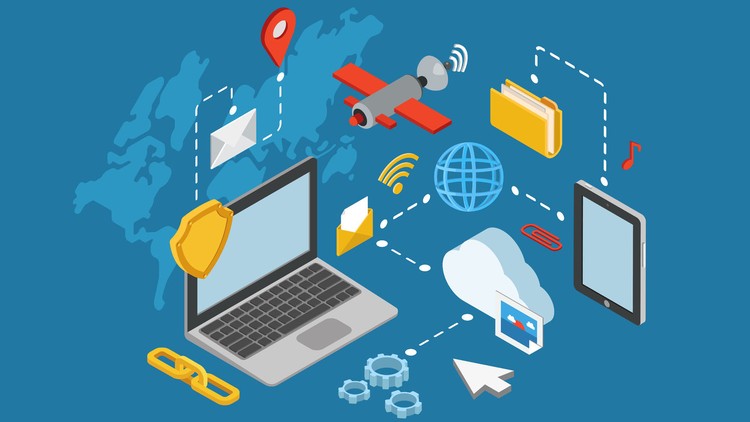By conducting thorough penetration tests and vulnerability assessments, we provide your organization with invaluable insights into the critical areas of vulnerability within your network environment.
Through our rigorous Network VAPT process, we go beyond merely identifying vulnerabilities – we prioritize them based on their severity and potential impact on your organization's security posture. By categorizing risks according to their level of criticality, we empower your organization to focus its resources and efforts on mitigating the most significant threats first. This proactive approach to risk management enables you to allocate resources efficiently, prioritize remediation efforts, and strengthen your overall cybersecurity defenses.
Partnering with a reputable network security consultancy like Valency Networks ensures that your organization receives expert guidance and actionable recommendations to address identified vulnerabilities effectively. Our team leverages industry-leading tools and methodologies to conduct comprehensive Network VAPT assessments, providing you with a detailed roadmap to enhance your security posture and mitigate potential risks. With our tailored approach to risk identification and prioritization, you can proactively safeguard your organization's assets, data, and reputation against evolving cyber threats.
Reduces Data Thefts
Minimizing the likelihood of data thefts and breaches is a critical aspect of network security, and comprehensive Network VAPT (Vulnerability Assessment and Penetration Testing) plays a pivotal role in achieving this goal. By conducting thorough penetration tests and vulnerability assessments, organizations can proactively identify and address vulnerabilities within their network infrastructure, reducing the risk of unauthorized access to sensitive data.
Our team of cybersecurity professionals specializes in uncovering potential vulnerabilities and weaknesses that could be exploited by malicious actors to gain access to sensitive information. Through meticulous testing and analysis, we identify vulnerabilities such as misconfigurations, unpatched software, and insecure network protocols that pose a threat to the security of your organization's data.
By addressing these vulnerabilities before they can be exploited, organizations can significantly reduce the likelihood of data thefts and breaches. Our Network VAPT process goes beyond surface-level testing to uncover hidden vulnerabilities and potential attack vectors, enabling organizations to implement targeted security measures to protect their sensitive data effectively.
Partnering with experienced network security consultants ensures that organizations receive expert guidance and support in securing their network environment against data thefts and breaches. With our tailored recommendations and actionable insights, organizations can strengthen their defenses and mitigate potential risks, safeguarding their valuable assets and reputation in the process.
Safeguard intellectual property
Safeguarding sensitive data and intellectual property is paramount in today's interconnected digital landscape, and Network VAPT (Vulnerability Assessment and Penetration Testing) plays a crucial role in achieving this objective. By conducting thorough penetration tests and vulnerability assessments, organizations can identify and mitigate vulnerabilities within their network infrastructure, ensuring the protection of sensitive data and intellectual property from potential cyber threats.
Our team of cybersecurity experts specializes in uncovering vulnerabilities and weaknesses that could compromise the security of sensitive data and intellectual property. Through meticulous testing and analysis, we identify vulnerabilities such as misconfigurations, unpatched software, and insecure network protocols that could be exploited by malicious actors to gain unauthorized access to confidential information.
By addressing these vulnerabilities proactively, organizations can strengthen their defenses and safeguard their sensitive data and intellectual property from potential cyber threats. Our Network VAPT process goes beyond surface-level testing to uncover hidden vulnerabilities and potential attack vectors, enabling organizations to implement targeted security measures to protect their most valuable assets effectively.
Partnering with experienced network security consultants like us ensures that organizations receive expert guidance and support in securing their network environment and safeguarding their sensitive data and intellectual property. With our comprehensive recommendations and actionable insights, organizations can mitigate potential risks and strengthen their security posture, safeguarding their valuable assets and maintaining the trust of their stakeholders.
Helps in compliances such as ISO27001, GDPR, HIPAA
Conducting Network VAPT (Vulnerability Assessment and Penetration Testing) is a crucial step towards achieving compliance with various information security standards and regulations such as ISO 27001, GDPR, HIPAA, and others. These compliance frameworks require organizations to implement robust security measures to protect sensitive data and ensure the integrity and confidentiality of information.
By conducting thorough penetration tests and vulnerability assessments, organizations can identify and address vulnerabilities within their network infrastructure, aligning their security practices with the requirements of information security standards and regulations. Our team of cybersecurity experts specializes in helping organizations navigate the complex landscape of compliance requirements, ensuring that they meet the necessary standards and regulations to safeguard their data and maintain regulatory compliance.
Through our Network VAPT process, we assess the security posture of organizations' network environments, identifying vulnerabilities and weaknesses that could impact their compliance with information security standards and regulations. By addressing these vulnerabilities proactively, organizations can strengthen their security defenses and demonstrate their commitment to protecting sensitive data and complying with regulatory requirements.
Partnering with experienced network security consultants like us provides organizations with the expertise and support needed to achieve compliance with information security standards and regulations. Our comprehensive recommendations and actionable insights help organizations implement the necessary security controls and measures to meet the requirements of ISO 27001, GDPR, HIPAA, and other compliance frameworks, ensuring the protection of sensitive data and the maintenance of regulatory compliance.
Gain trust in their customer's minds
Conducting Network VAPT (Vulnerability Assessment and Penetration Testing) helps organizations instill trust and confidence in their customers' minds by demonstrating a commitment to cybersecurity and the protection of sensitive data. In today's digital age, where data breaches and cyber attacks are prevalent, customers are increasingly concerned about the security practices of the organizations they interact with.
By proactively assessing and addressing vulnerabilities within their network infrastructure, organizations can demonstrate their dedication to safeguarding customer data and maintaining the confidentiality, integrity, and availability of information. Our team of cybersecurity experts specializes in helping organizations strengthen their security defenses through thorough penetration tests and vulnerability assessments, ensuring that they can mitigate potential risks and protect sensitive customer information from cyber threats.
Through our Network VAPT process, we provide organizations with actionable insights and recommendations to enhance their security posture and mitigate potential risks effectively. By partnering with experienced network security consultants like us, organizations can reassure their customers that their data is in safe hands and build trust and credibility in their brand.
By investing in cybersecurity measures such as Network VAPT, organizations can differentiate themselves from competitors and gain a competitive edge by demonstrating their commitment to protecting customer data and maintaining the highest standards of security. This, in turn, helps organizations build trust and confidence in their customers' minds, fostering long-term relationships and enhancing their reputation in the marketplace.
Increases Team Productivity
Conducting Network VAPT (Vulnerability Assessment and Penetration Testing) instills discipline within organizations and helps increase productivity by fostering a proactive approach to cybersecurity and risk management. By engaging in regular security testing and assessments, organizations cultivate a culture of vigilance and accountability among their teams, leading to improved efficiency and productivity across the board.
Our team of cybersecurity experts specializes in guiding organizations through the Network VAPT process, helping them understand the importance of security testing and its impact on productivity. By prioritizing security measures and addressing vulnerabilities proactively, organizations can minimize the likelihood of costly data breaches and downtime, allowing teams to focus their efforts on core business activities without disruptions.
Through our comprehensive Network VAPT assessments, we provide organizations with actionable insights and recommendations to strengthen their security posture and mitigate potential risks effectively. By implementing these recommendations, organizations can streamline their operations, reduce the likelihood of security incidents, and enhance overall productivity.
Moreover, engaging in regular Network VAPT activities encourages teams to stay updated on the latest security best practices and technologies, fostering continuous learning and skill development. By equipping teams with the knowledge and tools they need to address cybersecurity challenges, organizations empower their employees to work more efficiently and confidently, driving productivity and innovation.
Overall, Network VAPT plays a crucial role in instilling discipline within organizations and promoting a proactive approach to cybersecurity, ultimately leading to increased productivity and success in today's digital landscape.
Beat hackers in their game
Identifying known security exposures before attackers find them is a critical aspect of cybersecurity, and Network VAPT (Vulnerability Assessment and Penetration Testing) serves as a proactive defense mechanism in this regard. By conducting comprehensive penetration tests and vulnerability assessments, organizations can uncover and address vulnerabilities within their network infrastructure before they are exploited by malicious actors.
Our team of cybersecurity experts specializes in identifying known security exposures through thorough testing and analysis of organizations' network environments. By leveraging industry-leading tools and methodologies, we meticulously examine the network infrastructure to identify vulnerabilities such as misconfigurations, unpatched software, and weak authentication mechanisms.
By identifying these vulnerabilities before attackers have the chance to exploit them, organizations can significantly reduce their risk exposure and enhance their overall security posture. Through our Network VAPT process, we provide organizations with actionable insights and recommendations to address identified vulnerabilities effectively, enabling them to strengthen their defenses and mitigate potential risks.
Partnering with experienced network security consultants like us ensures that organizations stay one step ahead of potential attackers by identifying and addressing known security exposures proactively. By investing in regular Network VAPT activities, organizations can minimize the likelihood of security incidents and protect their valuable assets and data from unauthorized access and exploitation. This proactive approach to cybersecurity is essential in today's threat landscape, where cyber attacks are becoming increasingly sophisticated and prevalent.
Maintain inventory of Network device
Creating an inventory of all devices on the network, along with their purpose and system information, is essential for effective network management and security. Through Network VAPT (Vulnerability Assessment and Penetration Testing), organizations can achieve this by conducting thorough scans and assessments of their network infrastructure.
Our team of cybersecurity experts specializes in conducting comprehensive network scans to identify all devices connected to the network. This includes computers, servers, routers, switches, IoT devices, and any other network-connected devices. By leveraging advanced scanning tools and techniques, we collect detailed information about each device, including its purpose, operating system, software versions, and configuration details.
By creating an inventory of all devices on the network, organizations gain valuable insights into their network environment, enabling them to better manage and secure their infrastructure. This inventory serves as a foundation for effective network monitoring, asset management, and vulnerability management practices.
Through our Network VAPT process, we provide organizations with a comprehensive inventory of all devices on their network, along with detailed information about each device's purpose and system information. This enables organizations to identify potential security risks, prioritize remediation efforts, and ensure compliance with regulatory requirements.
Partnering with experienced network security consultants like us ensures that organizations have the visibility and control they need to effectively manage and secure their network infrastructure. By leveraging our expertise and advanced tools, organizations can create a robust inventory of network devices, enabling them to enhance their security posture and protect against potential threats.
Set Risk Baseline
Defining the level of risk that exists on the network is a crucial step in understanding and mitigating potential security threats. Through Network VAPT (Vulnerability Assessment and Penetration Testing), organizations can assess the risk landscape of their network infrastructure and determine the severity of potential vulnerabilities and weaknesses.
Our team of cybersecurity experts specializes in conducting comprehensive risk assessments of network environments. We leverage advanced scanning tools and techniques to identify vulnerabilities, misconfigurations, and other security issues that could pose a risk to the organization. By analyzing the results of these assessments, we provide organizations with insights into the level of risk present on their network.
By defining the level of risk, organizations can prioritize their security efforts and allocate resources effectively. This allows them to focus on addressing the most critical vulnerabilities and weaknesses first, thereby reducing the overall risk exposure of the network.
Through our Network VAPT process, we provide organizations with a detailed risk assessment report that outlines the severity of identified vulnerabilities and their potential impact on the organization. This enables organizations to make informed decisions about how to mitigate risks and strengthen their security posture.
Partnering with experienced network security consultants like us ensures that organizations have the expertise and support they need to define and address the level of risk on their network. By leveraging our knowledge and tools, organizations can effectively manage and mitigate security threats, safeguarding their assets and data from potential harm.
Establish a business risk/benefit curve
Establishing a business risk/benefit curve and optimizing security investments is essential for organizations to make informed decisions about their cybersecurity strategy. Through Network VAPT (Vulnerability Assessment and Penetration Testing), organizations can gain insights into the potential risks and benefits associated with various security investments.
Our team of cybersecurity experts specializes in helping organizations establish a risk/benefit curve by conducting comprehensive assessments of their network infrastructure. We identify vulnerabilities, weaknesses, and potential security threats, and assess their potential impact on the organization's business operations and objectives.
By analyzing the results of these assessments, we provide organizations with insights into the potential risks and benefits associated with different security investments. This allows organizations to prioritize their security initiatives based on their potential impact on the organization's overall risk posture and business objectives.
Through our Network VAPT process, we provide organizations with actionable recommendations for optimizing their security investments. This may include investing in additional security controls, implementing security best practices, or improving security awareness training for employees.
Partnering with experienced network security consultants like us ensures that organizations can make informed decisions about their security investments. By leveraging our expertise and insights, organizations can optimize their security investments to effectively mitigate risks and protect their assets and data from potential security threats.








